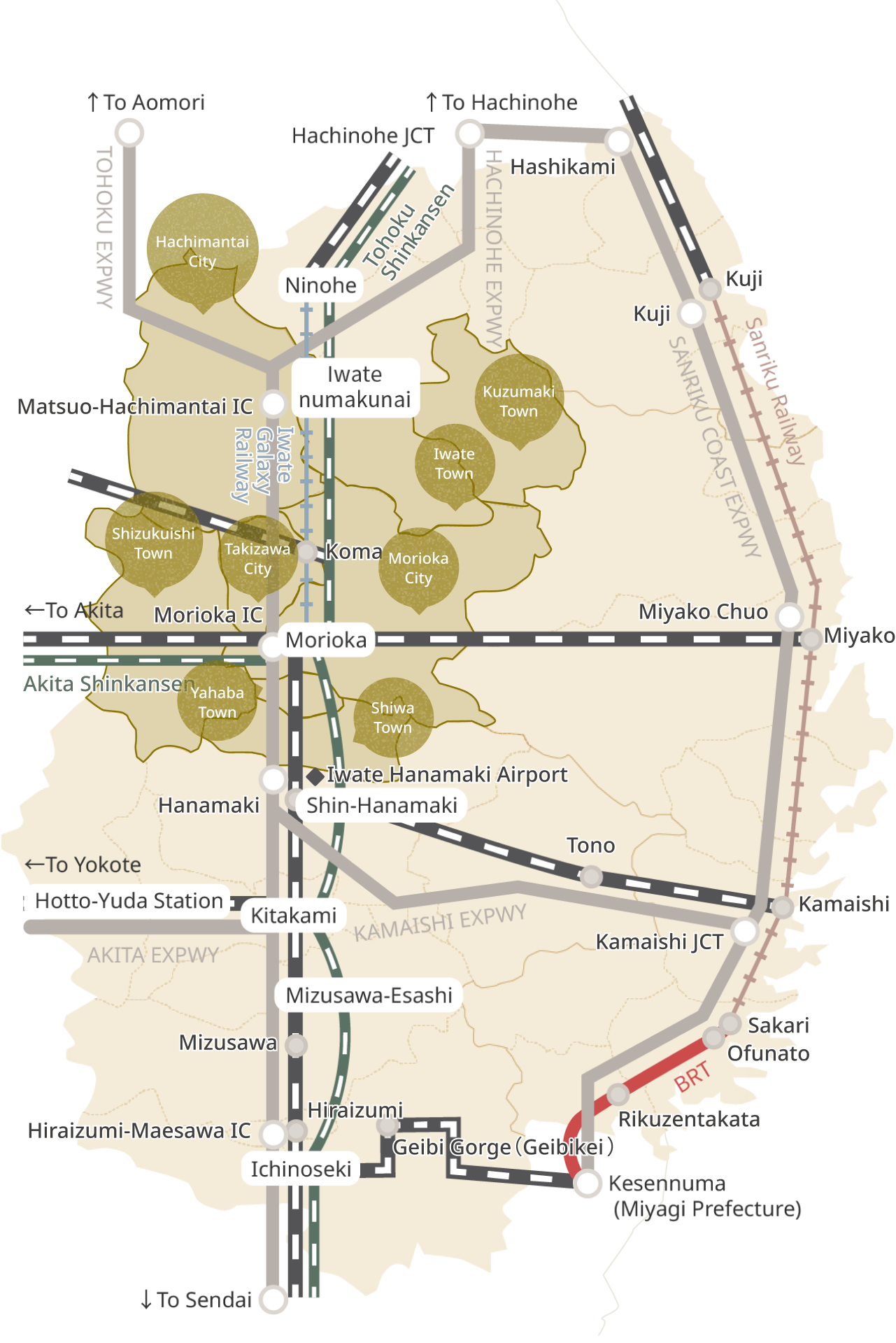
- Inquiries
- Industrial Development Office, Strategic Planning Department, Morioka Regional Development Bureau
- Address
- 11-1 Uchimaru,Morioka-shi, Iwate-ken 020-0023
- Phone Number
- 019-629-6512
- Fax Number
- 019-629-6529
By using this website, you are deemed to have consented to the setting and use of cookies. For more information, please refer to our Privacy Policy.
Translation is done using automatic translation software, so some words may not be accurate. Please understand this in advance.
The area extends around Morioka, the prefectural capital.
To the west is Towada-Hachimantai National Park, and breathtaking views surround the area around Mt. Iwate, also known as the Nanbu Fuji, and Hachimantai.
Along the central flow of the Kitakami River and the surrounding rural landscapes, various onsen await across the abundant land, showcasing the ever-changing expressions of the four seasons amidst the rich and bountiful nature.
Enjoy sake, wine, beer, and other locally brewed alcoholic beverages, as well as traditional cuisine.

